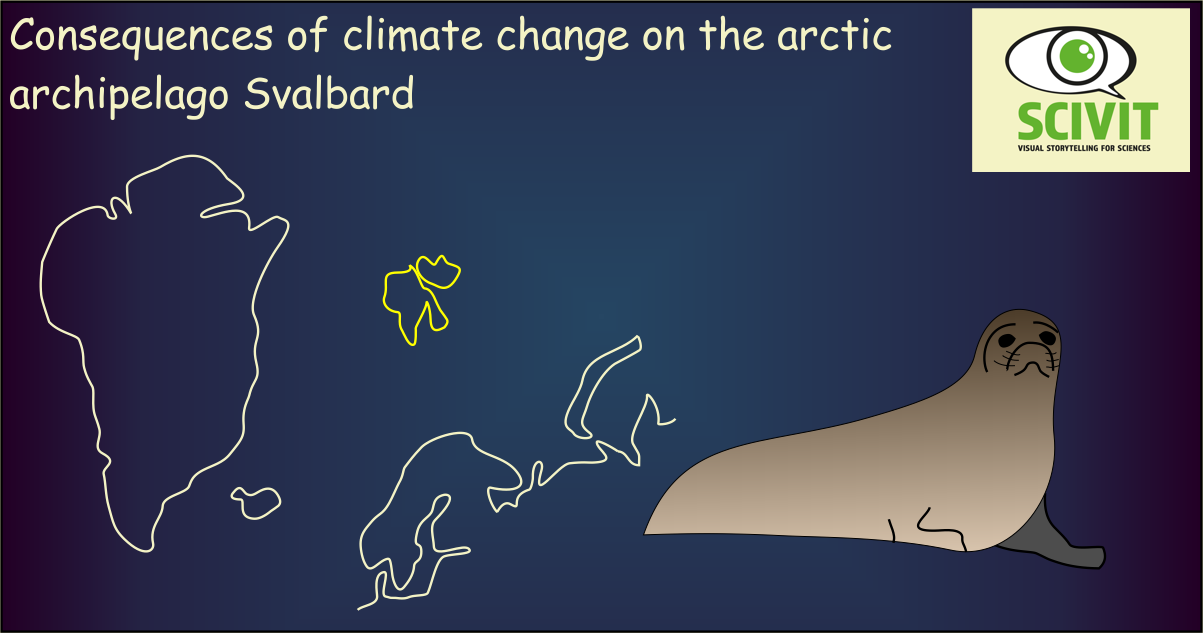
Consequences of climate change on the arctic archipelago Svalbard
Climate change and life in the High Arctic
Climate change has resulted in particularly strongly rising temperatures in the High Arctic. How is this affecting ecosystems in this area? To find answers, Descamps et al., have summarized data from 33 publications covering the effects of climate change on the norwegian island Svalbard.
Disappearing sea ice and “rain-on-snow-events” are driving shifts from arctic to boreal species
These publications document the rise in temperate boreal species to the expense of arctic endemic species. The main driver, in this regard, is the decline in sea ice cover, which is essential for animals like the ringed seal or the polar bear as hunting ground, hiding place or route of migration. An increase of „rain-on-snow-events“ in increasingly warm winters is also an important driver, damaging to species like reindeer, ptarmigans or arctic foxes. Temperatures are predicted to rise further in the decades to come and the authors call for increased efforts in monitoring to guide conservation measures.
Source: Descamps et al., Global Change Biology 23, 490 – 502
Neueste Kommentare